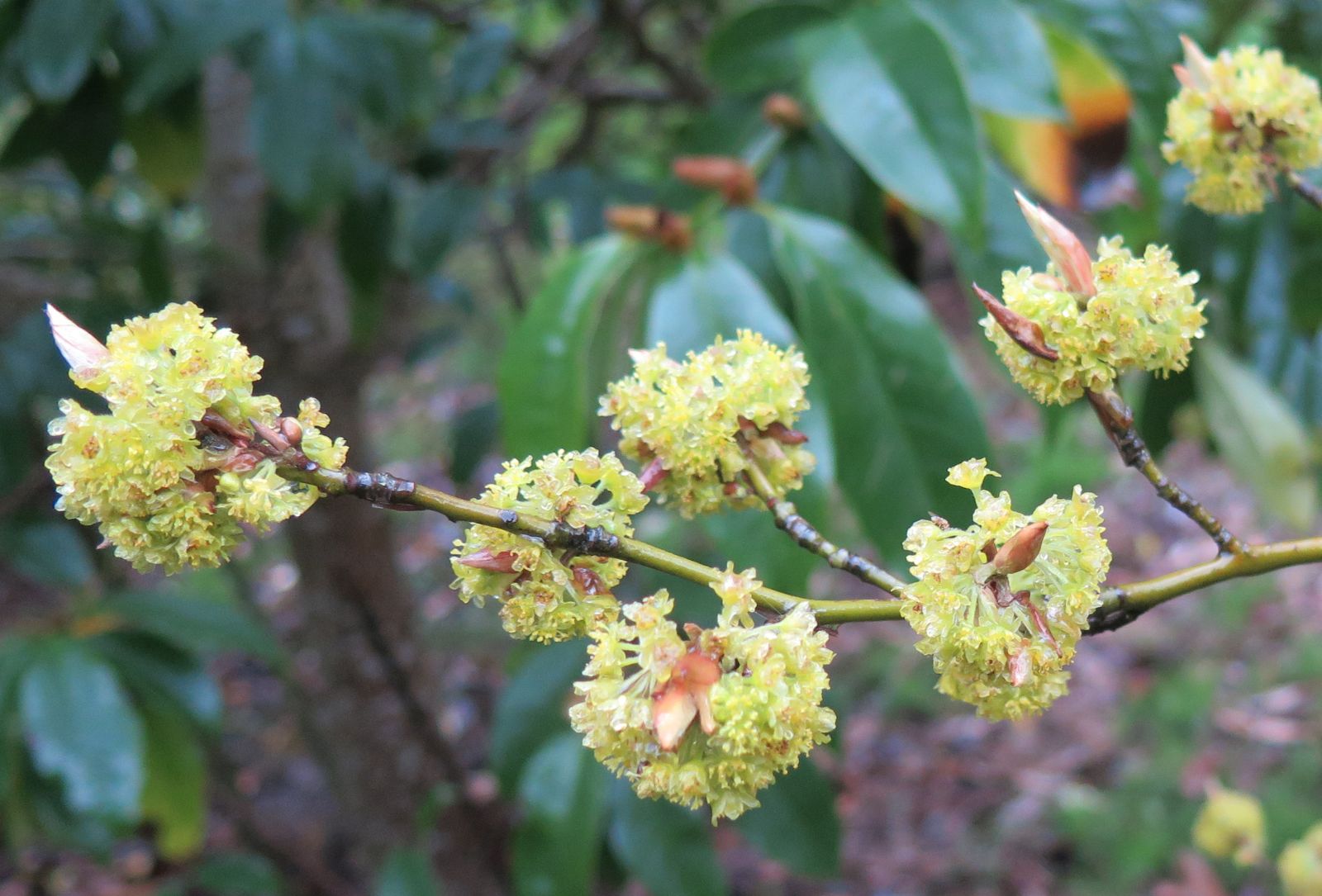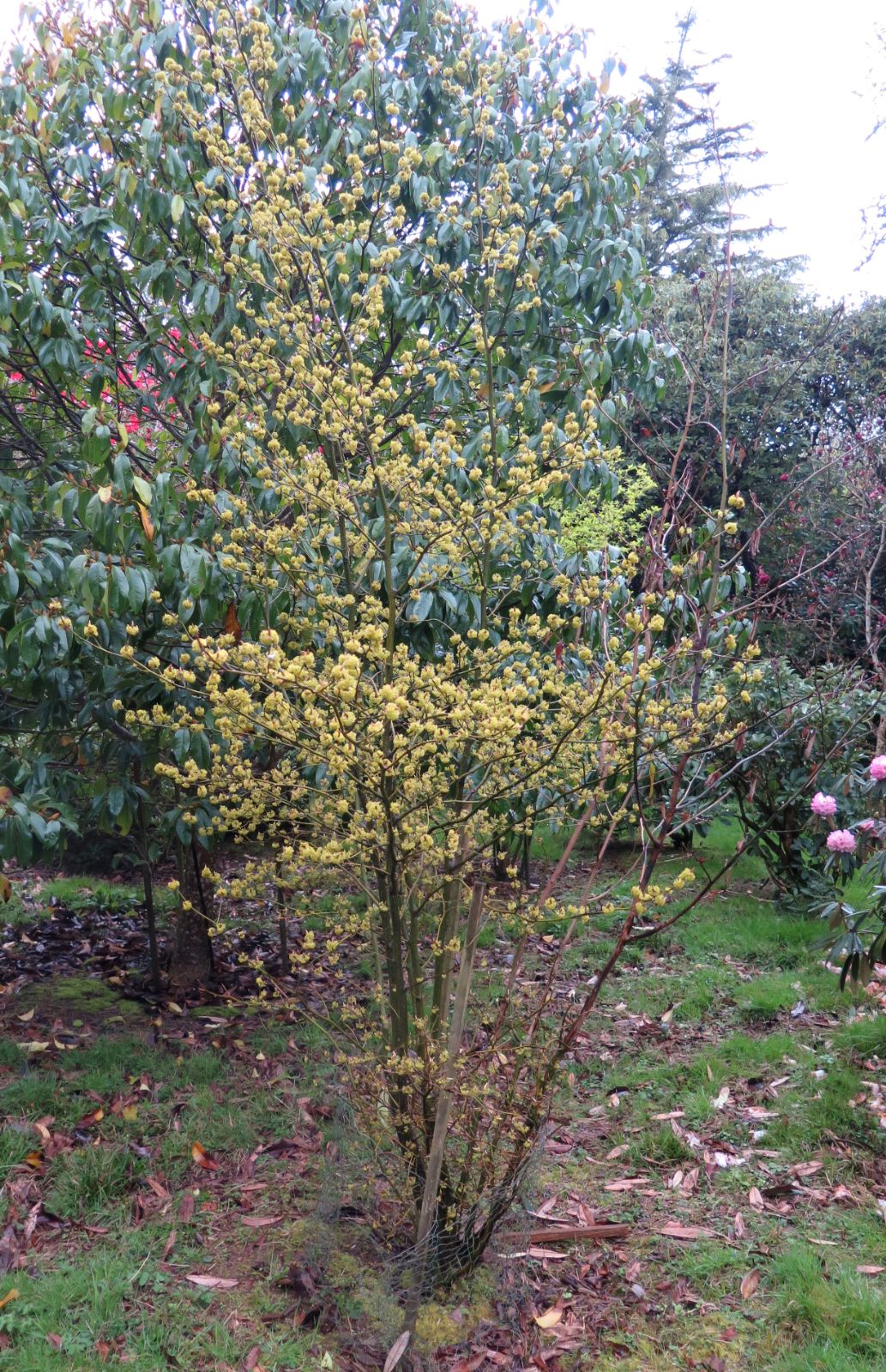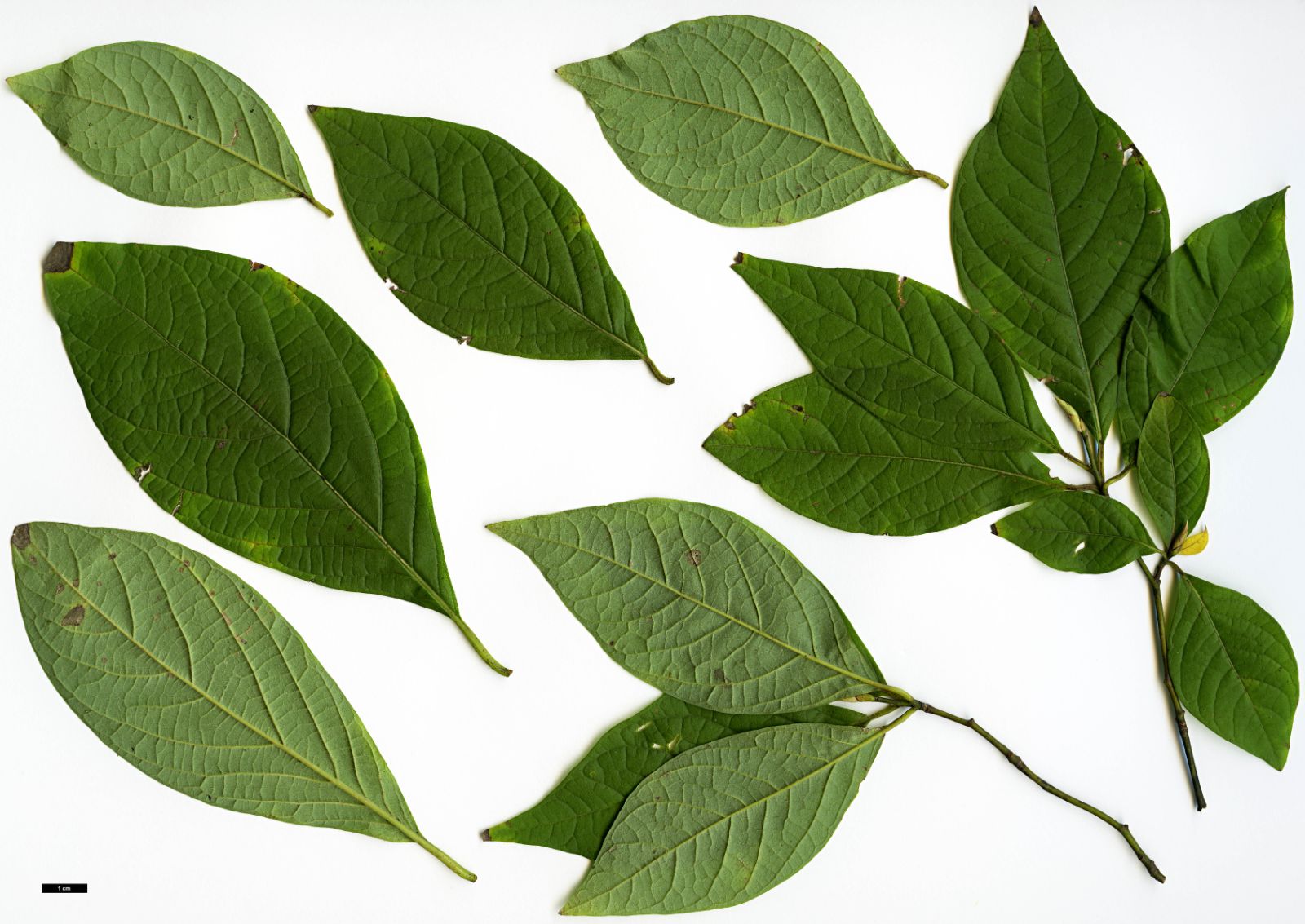Lindera sericea
Sponsor
Kindly sponsored by
a member of the International Dendrology Society
Credits
Julian Sutton (2023)
Recommended citation
Sutton, J. (2023), 'Lindera sericea' from the website Trees and Shrubs Online (treesandshrubsonline.
Genus
Synonyms
- Benzoin sericeum Siebold & Zucc.
- Lindera umbellata var. sericea (Siebold & Zucc.) Makino
Other taxa in genus
- Lindera aggregata
- Lindera akoensis
- Lindera angustifolia
- Lindera assamica
- Lindera benzoin
- Lindera chienii
- Lindera communis
- Lindera erythrocarpa
- Lindera floribunda
- Lindera fragrans
- Lindera glauca
- Lindera megaphylla
- Lindera melissifolia
- Lindera metcalfiana
- Lindera neesiana
- Lindera obtusiloba
- Lindera praecox
- Lindera pulcherrima
- Lindera reflexa
- Lindera rubronervia
- Lindera tonkinensis
- Lindera triloba
- Lindera umbellata
Deciduous shrub or small tree to 4 m. Young branchlets yellow-green with silky hairs, becoming red-brown or black, and glabrous. Leaves pinnately veined with 6–12 pairs of lateral veins; blade membranous, obovate, 6–20 × 3–7 cm, both surfaces with short, persistent hairs (in the type variety); base cuneate; margin entire; apex acuminate to acute; petiole 0.5–1.5 cm. Umbels axillary, subsessile, produced just below the newly expanding leaves, each with 4–7 flowers on pedicels with short golden hairs. Flowers with 6 tepals; male flowers with 9 fertile stamens, females with reduced staminodes. Fruit globose, black, 0.7 cm across. (Grimshaw & Bayton 2009; Ohwi 1965; Liao 1988).
Distribution Japan Honshu, Shikoku, Kyushu South Korea
Habitat Moist slopes, 300–1200 m.
USDA Hardiness Zone 9-10
RHS Hardiness Rating H2
Conservation status Least concern (LC)
Little known in western gardens, this is one of the usually shrubby species with deciduous, pinnately veined leaves, umbels of small yellowish flowers on the bare twigs in spring and – if males and females are grown together – small black fruit. Its rather southerly distribution, together with a track record of tenderness and general absence from cultivation, suggest that this is not a very hardy plant. It is worth attempting in warm gardens, however, for its stems (yellow-green when young, ultimately dark) and bright yellow autumn foliage (Grimshaw & Bayton 2009); it can at least sometimes put on an impressive display of flowers.
Lindera sericea is closely comparible to L. umbellata, which extends further north in Japan and includes hardier forms. L. sericea differs in the persitence of the leaf hairs as the leaf ages; while L. umbellata may have silky hairs on the undersurface at first, they do not persist. In typical L. sericea the hairs are short and on both surfaces; in var. glabrata Blume the hairs are long but scattered, and only on the lower surface. Var. lancea (Momiy.) H.Ohba has narrower leaves with persistent, silky hairs beneath (Ohwi 1965).
The Veitch nursery in southern England introduced Lindera sericea to western gardens in the late 19th century, but it was always damaged by frost at Kew (Clarke 1988) It has been collected again from Japan in recent years: there are several plants of Kyushu provenance growing unprotected at RBG Edinburgh from ESJE 77 of 2006. Crûg Farm has made collections from Kyushu in 2005 (BSWJ 11123, 11141) and from Shikoku in 2006 (BSWJ 11417, 11419). Further Crûg collections identified as var. lancea are BSWJ 11118 (Kyushu 2005) and 11071 (S Honshu 2006) (Crûg Farm 2023). All these introductions deserve careful monitoring for performance and hardiness. As ever, received identifications in this difficult genus should always be checked.







